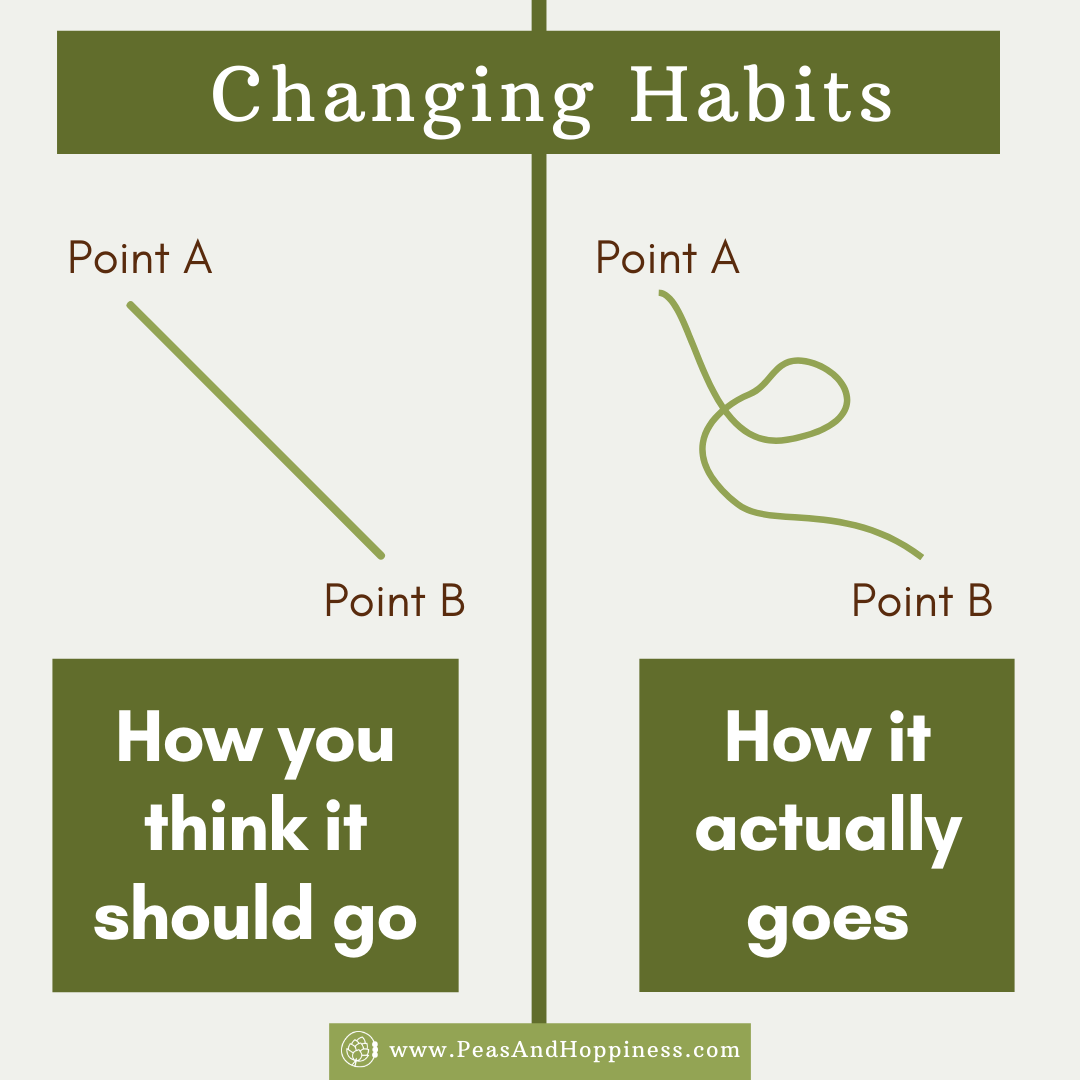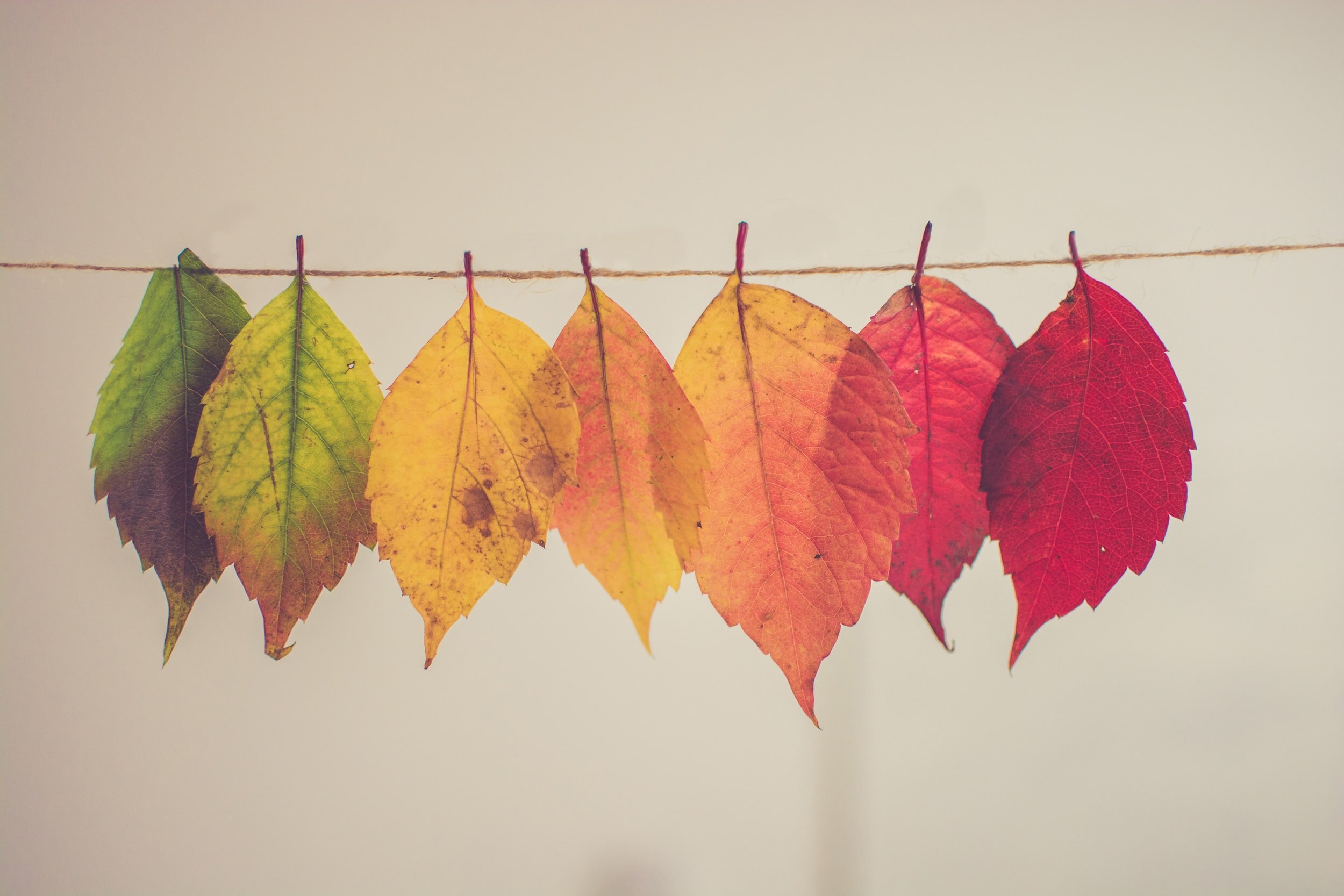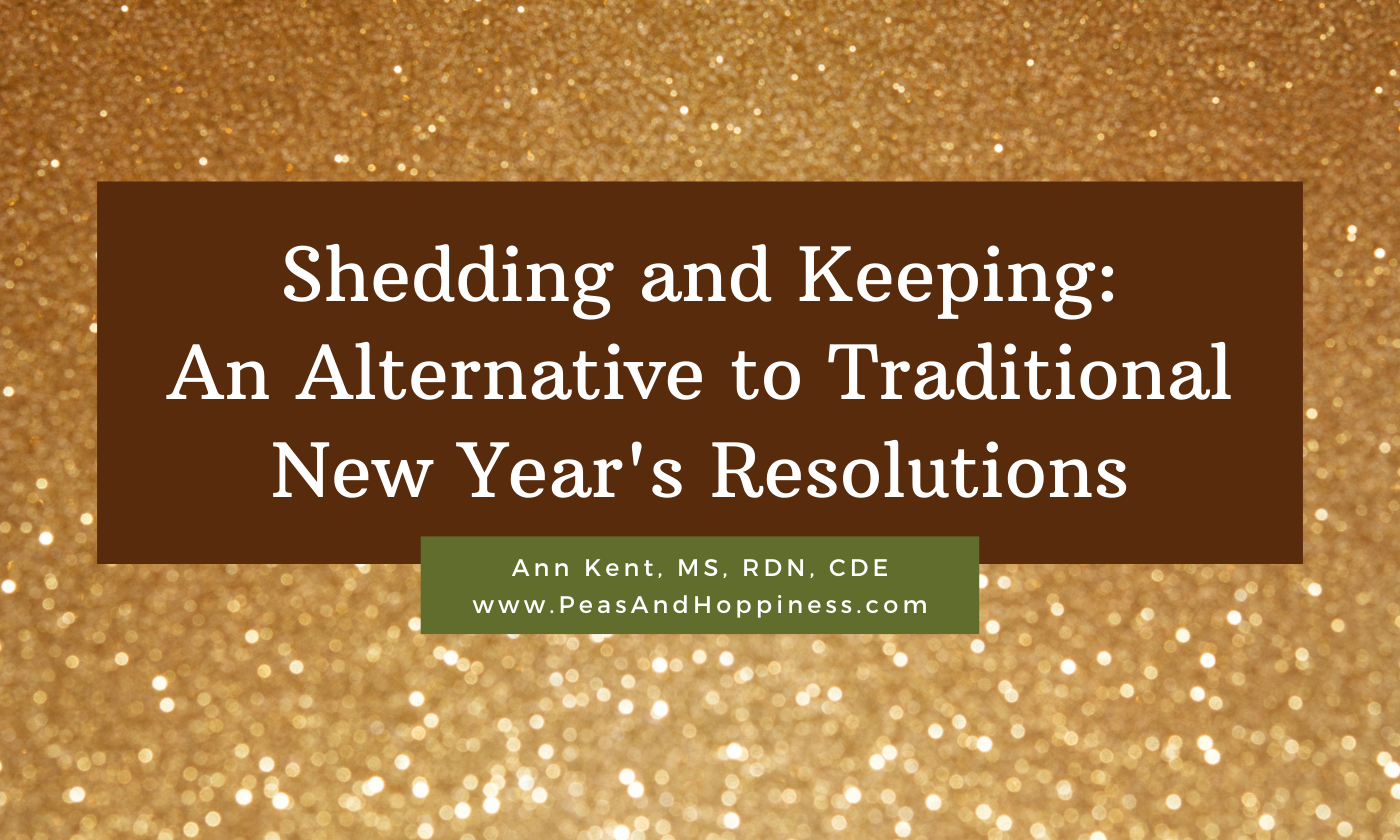
How to set a goal you’ll keep and avoid resolutions which usually fail
You know one of the most frustrating things about changing habits?
It takes time.
Habits are like a well-worn trail in your brain. That’s why changing them is so hard: you not only have to break ground on a completely new path, it also takes time for the old path to overgrow enough that you can’t see it anymore.
This isn’t just an analogy. This is how the physiology of our brain actually works.
And until that new path is so clear, so well defined – and by contrast the old path is so difficult to see – you’ll still occasionally (or sometimes even frequently) walk down that old path again.
Change isn’t Linear: Why You’re Going to Fail at Meeting your Goal (and why it’s Okay to “Fail”)
A few days ago I went on a walk with a friend. It’s the end of December, so I asked her what her New Year’s resolution is.
She told me she wasn’t setting a resolution this year, but rather she has been identifying what she is shedding and what she is keeping.
What she is shedding and what she is keeping.
She is working on growing closer to who she wants to become this year, understanding that change isn’t a straight line. It will take many iterations of change, of goals, of dreams, and of discipline to become who she is meant to be.
It will look like “failure” at first, but rather than fight this non-linear path and berate herself for her unique walk of change, she is instead focusing on the process of forming habits.
She is doing this by choosing to keep what serves her and shed what doesn’t.

How to Identify What to Shed and What to Keep
As you’re walking along your new path, you’ll find some things that used to serve you well don’t serve you anymore.
How do you know what serves you and what doesn’t? It starts with noticing.
Perhaps it used to bring you joy to grab cocktails with your co-worker at happy hour every Thursday. Perhaps recently you’ve noticed all you do is complain about work when the two of you meet.
After your weekly meet-up you feel discouraged. You’re in a bad mood when you get home – and your family can tell.
This is an opportunity to pause, reflect, and notice:
-
How did you feel before meeting this friend for happy hour? How did you feel after?
-
Does this interaction bring you closer to who you want to be or take you farther away?
-
What parts of this interaction serve you and you would like to keep?
-
What parts are harmful, and you would like to let go?
Observe without judgment. As my favorite yoga instructor says, “Notice what you notice.”
Once you understand how the interaction does or doesn’t serve you, you can make a choice of what to shed and what to keep.
Perhaps you don’t need to give up the friendship; perhaps you just need a change of scenery. You could keep the weekly meet-ups, but shed the happy hour and go on a walk together instead.
The Iterative Process of Shedding and Keeping to Uncover Who you Are
It’s very likely the first time you make an adjustment it will be better, but not perfect. This is very normal. But the problem with goals and resolutions is they expect perfection.
Here is a bar; if you don’t reach the bar, you’ve failed.
My friend, that’s simply not how humans work. We try, we succeed, we fail, we fall, we get back on track, we try again, repeat. After adjusting your interaction, make time to pause, reflect, and notice again. Ask yourself the same questions as before and make another adjustment.
If perhaps you’re still unhappy, it may be time to shed another layer and find another option.
What I’m Shedding and Keeping
This year I’m shedding some parts of myself that aren’t serving me anymore.
I’m shedding the idea that if I’m not productive I’m not a full human. I’m shedding the constant phrase, “I’m sorry,” unless it truly needs to be said.
I’m shedding things I don’t need – like plastic bottles and fast fashion and trinkets which collect dust but serve no purpose.
I’m shedding perfectionism and learning to meet myself where I am. I’m shedding the infatuation with depravity and embracing the possibility of a world where all people have enough; have abundance, even.

I’m also keeping a lot, so much of which I’ve learned over the past year.
I’m keeping my desire for justice for all people, my passion towards creating a world which is better for the next generation. I’m creating action around these parts of myself.
I’m keeping insistence on spending money on quality food from local farmers, ethically made clothing, and sustainably made household goods. I’m leaning into this and learning more next year.
I’m keeping the memories and family heirlooms and incorporating them into the décor of our home.
I’m keeping the love and shedding the superfluous.
I’m keeping kindness and shedding despair.
I’m keeping relationships and shedding things.

I always wanted to be able to balance in tree pose on top of a mountain. After four years of consistent yoga practice, it’s actually easy. But it took four years of practice, shedding, and keeping to get here.
Where to Go From Here
Much like goals, shedding and keeping happens only with intention, consideration, and action. It’s a practice, it’s a journey.
Things will go well for a while, and then they won’t. And then I’ll need to take time to pause, reflect, meditate, journal, and reflect again on what I want to keep and what I want to shed.
I’ll do this over and over, for the rest of my life, slowly uncovering the person I’m meant to be.
If you’re ready to move closer to who you’re meant to be, but you’re not sure how to start, you should know you’re not alone.
This process of shedding and keeping is how I work with my clients*. I help them identify what’s working well to keep and leaving behind what isn’t.
If you want someone to guide you on this journey, this is how I practice nutrition coaching. You’re welcome to set up a complimentary discovery call to see if we’d be a good fit. Yes, we talk about nutrition, but we really talk about so much more than that.
Wherever this new year finds you, I hope you keep what serves you, release what doesn’t, and continue to seek joy and love in this world.
Happy eating and happy living,
Ann from Peas and Hoppiness
*P.S. I’m a registered dietitian by trade, but I’m also a human. I consider myself a nutrition coach because of the relationship I have with my clients; we go way beyond “what you should eat” and dig into the “why” that drives them. I believe you can’t make true, lasting progress until you understand your “why.”
Related Posts
New Year, New Decade
Love Wins: Reflections on an Election Year
Happiness, a Poem
